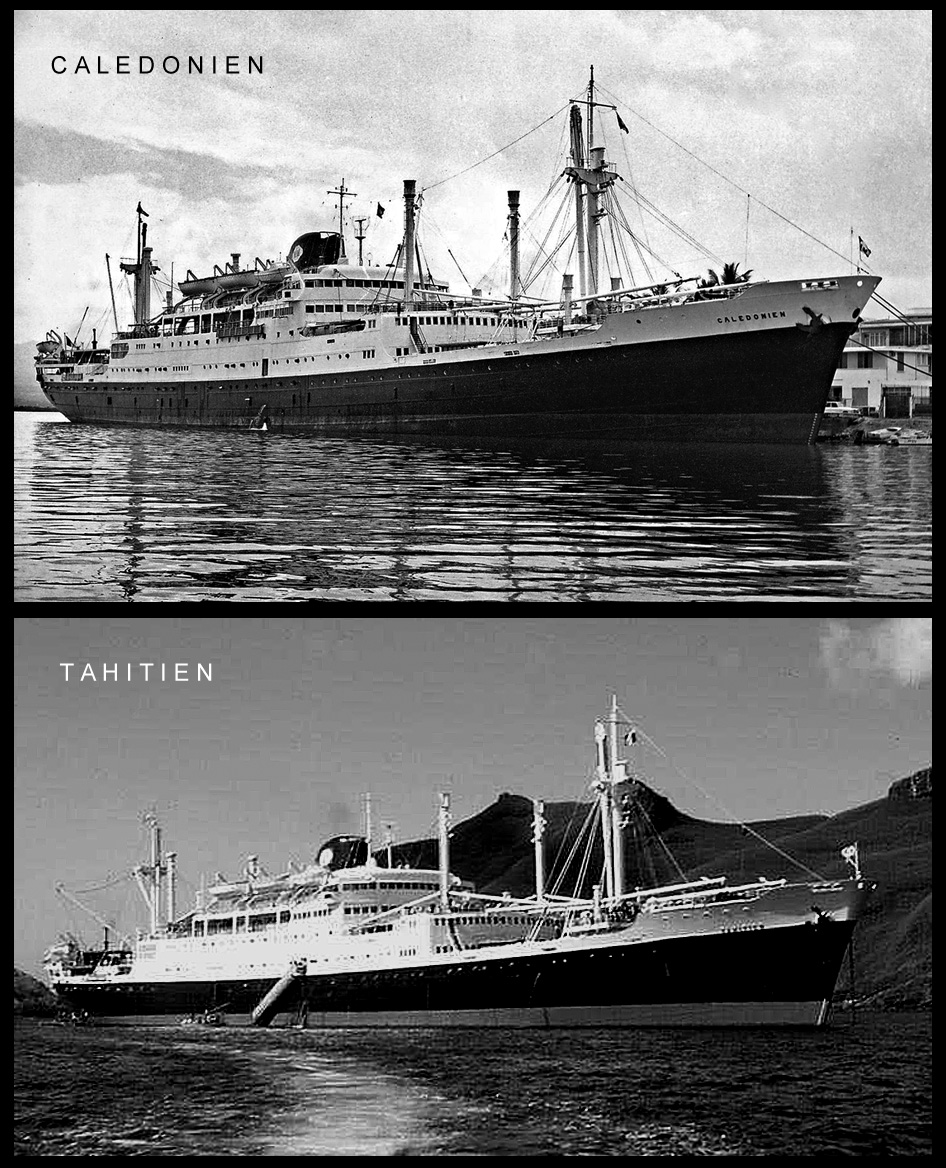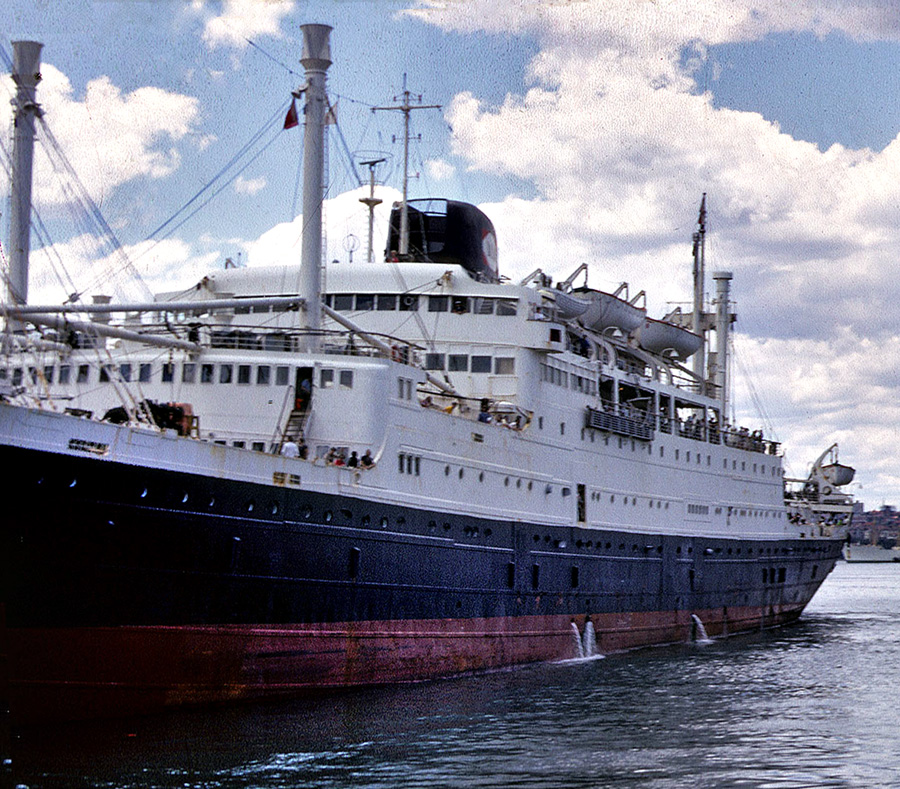

|
My story really starts wih the "Calédonien" but before I launch into that, I should give you some details of her history. Fortunately in this age of instant information about everything, one can find web sites dedicated to boats especially like these old passenger freighters. Here are a few details that I have collected from the web about the Calédonien and her sister ship the Tahitien (see also the links at the bottom of this page). "The French shipping company, Cie. Des Messageries Maritimes, ordered two (twin) ships, the Calédonien and the Tahitien. Calédonien was built by A & C de France at Dunkirk and delivered in September 1952, whereas the Tahitien was built by Arsenal de Brest (yard no: ME2) and was delivered in February 1953. Both ships originally operated on the Marseilles to Sydney service via the Panama Canal. MS Tahitien at 12,614 GRT (gross registered Tons) measured 167.20m (548.5ft) in length, 20.70m (68ft) wide, having a draft of 7.80m (25.5ft). She was powered by Burmeister & Wain diesels giving her a maximum speed of 18 knots. She accommodated 373 passengers in four classes. First: 71 / Tourist: 84 / Third: 142 / Steerage (Dormitory): 76. First class accommodations were located on first two decks of the superstructure with the public rooms and swimming pool on Promenade Deck. Most were twin / three berths, all had private facilities. Tourist class cabins were for two or four berths all outside but without private facilities. Third and steerage was basic but comfortable. These mixed liners guaranteed a return passage, Marseilles - Sydney Marseilles, via the Panama canal, with their paths crossing in the Pacific. All the Polynesians remember these ships arriving in Papeete or Taiohae, and the extraordinary welcome accorded to their passengers contributed greatly to Tahiti's renown. Their ports-of-call were Algiers, Madeira, Guadeloupe and Martinique, Curaçao, Panama Canal, Nuku Hiva (Taiohae) Tahiti, Tin Can Island and Noumea. The hierarchy of the class-system was strictly observed on board, a last whiff of the post-colonial era. Wealthy civil servants and traders traveled first class with exclusive rights to the upper deck, and the two remaining groups were only allowed to fraternize with each other. Emigrants bound for Australia, frequently from Scandinavia, were huddled together in third class with the soldiers about to do their military service in Tahiti or Noumea. In the middle you had second class passengers consisting of non-commissioned officers, gendarmes and their wives, craftsmen and a few poor whites fleeing Europe." |
